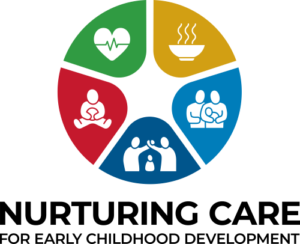Advocacy can happen at local, sub-national, national, regional, and global levels. Here, we provide resources to help you with the “how”. The materials listed include guides, practical tools, and examples of best practice to help you develop and advance your advocacy efforts.
For a summary of what works for advocacy read this excerpt from the Nurturing Care Handbook.
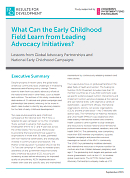
What can the early childhood field learn from leading advocacy initiatives?
Author: Results for Development 2015
In 2015, Research for Development (R4D) reviewed 21 national and global campaigns to find out what works. The publication delves into the lessons learned from six case studies to inform the international early childhood development community on how other sectors have approached advocacy, as well as how specific ECD campaigns achieved national impact.
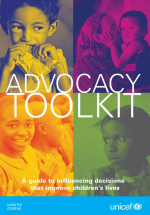
Advocacy toolkit: A guide to influencing decisions that improve children’s lives
Author: UNICEF 2010
UNICEF has an exceptional history of advocating to protect and promote children’s and women’s rights. The Advocacy Toolkit stems from this, systematizing and coordinating both internal and external advocacy expertise, as well developing a few innovative approaches. The Toolkit provides a set of practical tools to help UNICEF staff and partners in the development and management of their advocacy work.
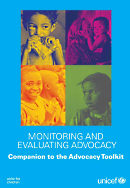
Monitoring and evaluating advocacy: Companion to the advocacy toolkit
Author: UNICEF
This guide looks at strategies and features of evaluations that focus on assessing the impact of advocacy campaigns. The key element of the guide is built around five questions for planning advocacy monitoring and evaluation. A number of case studies are also included to demonstrate how these key questions were answered in the field.
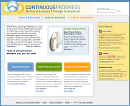
Continuous progress: Better advocacy through evaluation
Author: The Aspen Institute
This interactive tool guides users through a M&E planning process for advocacy efforts, producing a customized logic model. The Aspen Institute also has an online companion guide for advocates, with step-by-step guidance for planning.
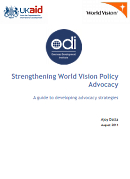
Strengthening World Vision policy advocacy: A guide to developing advocacy strategies
Author: UK Aid, World Vision Overseas Development Institute 2011
This ‘how to guide’ was written as a reference guide for World Vision staff who want to develop an advocacy plan, and complements the training workshops delivered by the RAPID programme for staff from the Zambia and Uganda World Vision offices during 2010. However, other organisations will likely find it useful for their context.
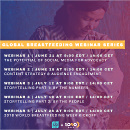
Global breastfeeding webinar series
Author: 1,000 Days Upswell 2018
Learn how to use social media as an advocacy tool. The Global Breastfeeding Webinar Series offers training to breastfeeding advocates on how to utilize social media to promote, protect and support breastfeeding. Created in the lead-up to World Breastfeeding Week in August 2018, the Webinar Series is intended for program managers, advocates and communicators who understand the need to boost the quantity and quality of content on breastfeeding. Read a short description of each webinar here.
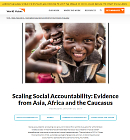
Scaling social accountability: Evidence from Asia, Africa and the Caucasus
Author: World Vision International 2019
This publication describes World Vision’s social accountability approach – Citizen Voice and Action (CVA) – and shares evidence of the impact of this approach after 12 years investment in research and application across 48 countries, including 15 designated as fragile contexts/states.
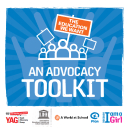
An advocacy toolkit: The education we want
Author: Plan International, A World at School and the Youth Advocacy Group of the Global Education First Initiative
This advocacy toolkit, produced by Plan International in partnership with A World at School and the Youth Advocacy Group of the Global Education First Initiative, has been developed for young people, by young people. Packed full of ideas, tools and inspiring stories, the resource helps children and youth to effectively advocate for their right to an education. Though intended for advocates in the education sector, the processes, tools, and stories can be leveraged to further advocacy efforts in other sectors.
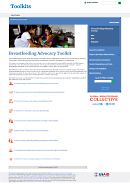
Breastfeeding advocacy toolkit
Author: Global Breastfeeding Collective, UNICEF, World Health Organization 2019
The Breastfeeding Advocacy Toolkit is intended to ensure stakeholders are able to easily access and use advocacy tools aimed at improving policies and financing for the protection, promotion, and support of breastfeeding. The Toolkit is an initiative of the Global Breastfeeding Collective. Led by UNICEF and WHO, the Collective is a partnership of over 20 international organizations with the goal of increasing investment and policy change to support breastfeeding worldwide, which requires advocacy at the global, national, and sub-national levels.
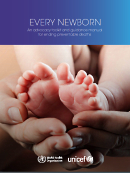
Every newborn: An advocacy toolkit and guidance manual for ending preventable deaths
Author: UNICEF, World Health Organization 2018
This guide offers practical tools for country programmes and stakeholders to support advocacy for improving newborn and maternal health and preventing stillbirths. It is especially important in countries with a high burden of newborn and maternal mortality. The document is by no means exhaustive but aims to provide a repository of quick reference and examples to the user. The toolkit shows how to undertake advocacy and communication in various national and local contexts, particularly in support of the global Every Newborn initiative, providing a wide range of options for outreach and advocacy activities tailored to specific audiences. It includes key messages on newborn and maternal health, as well as examples of letters to policymakers, briefs, press releases, social media content and other relevant materials to make the case for improving the quality of care and scaling up newborn and maternal health interventions.




